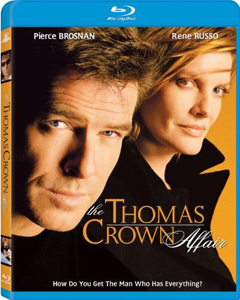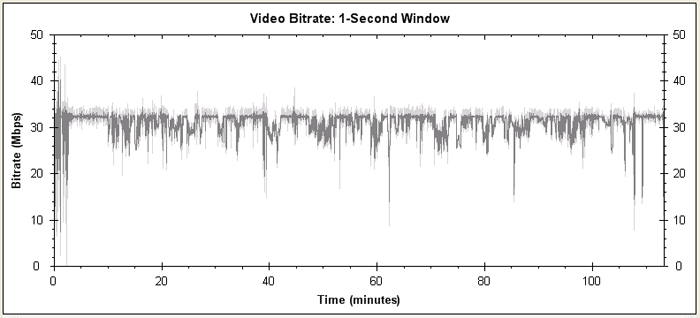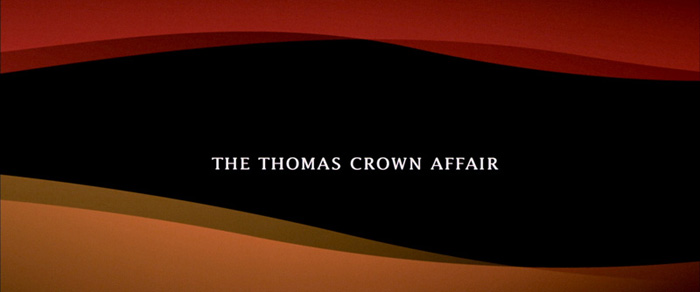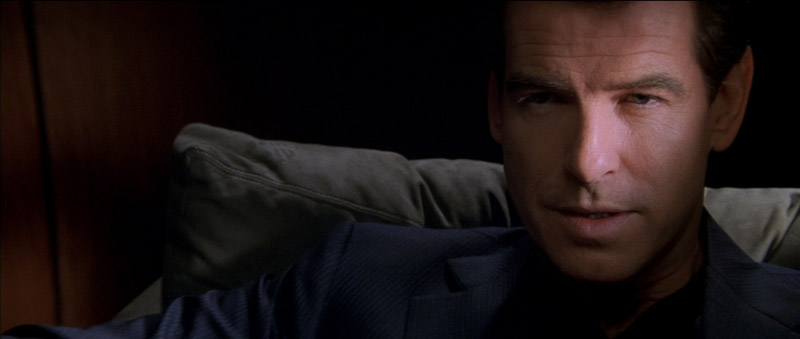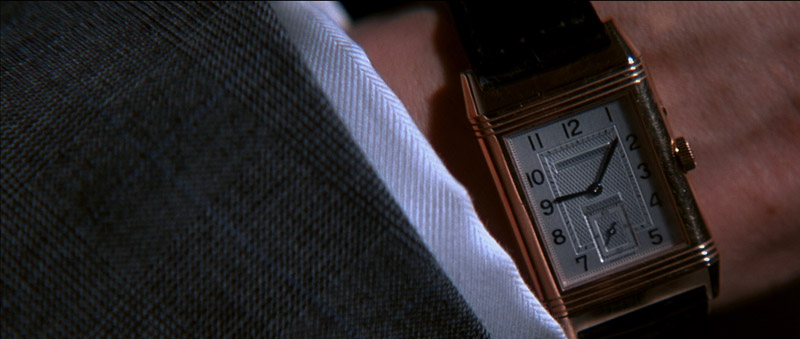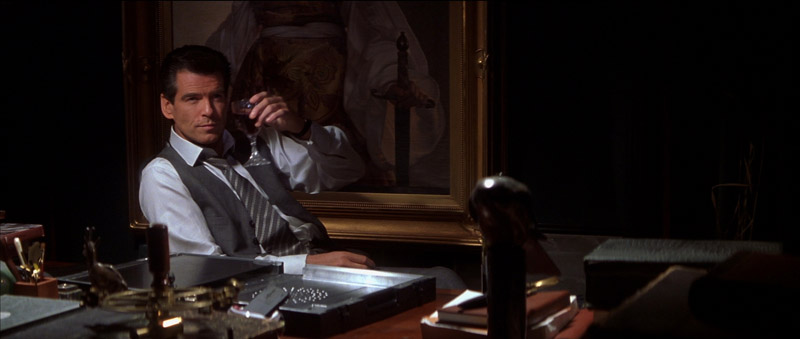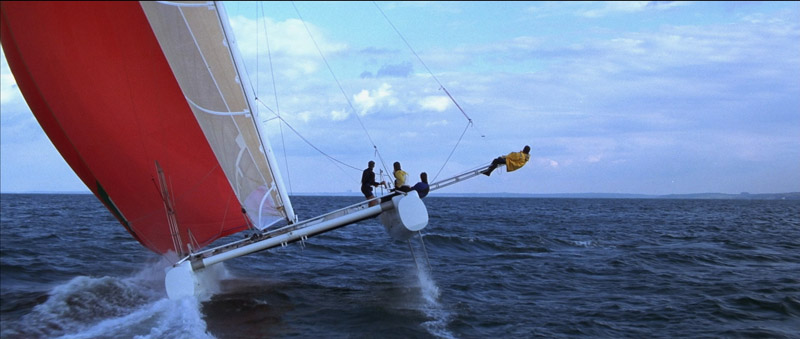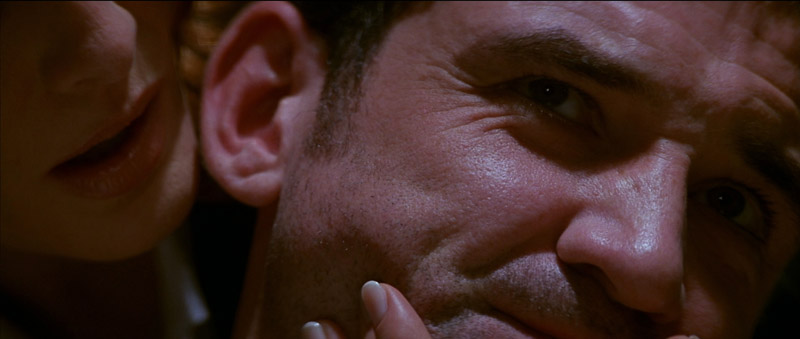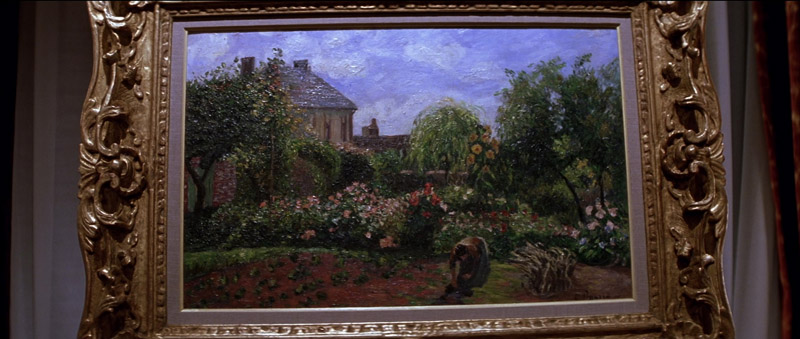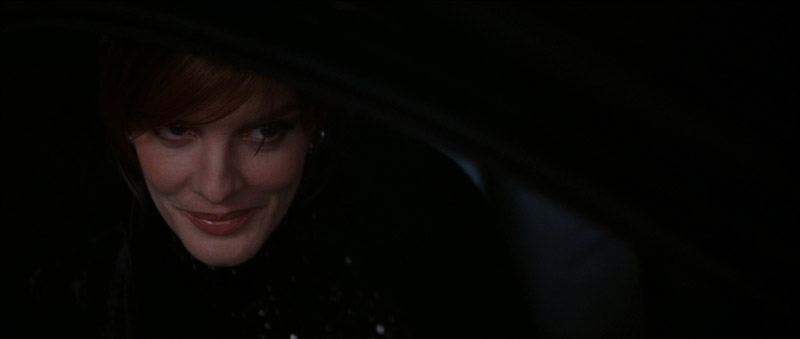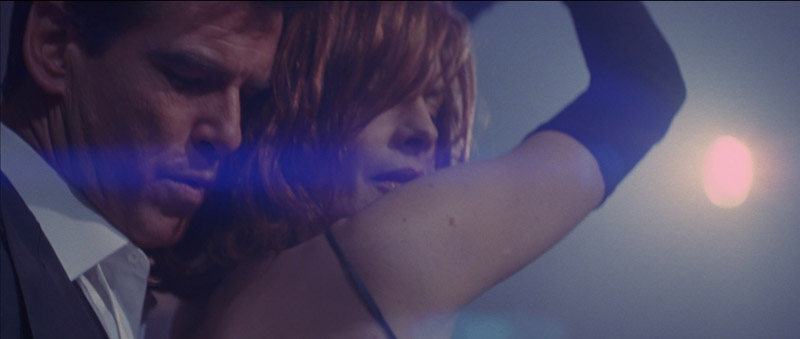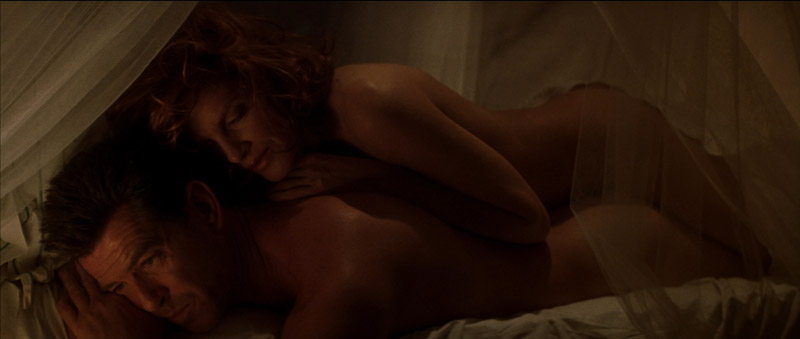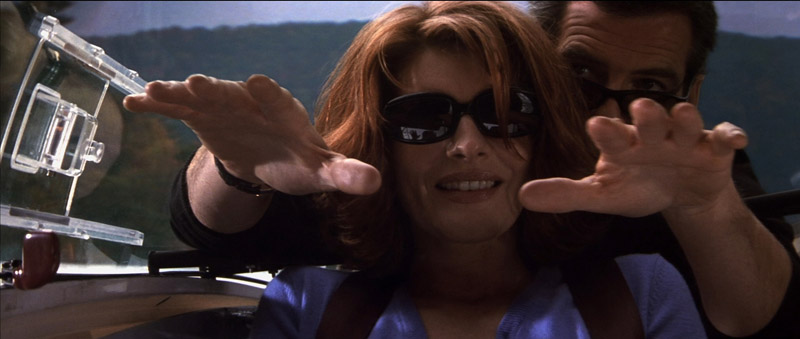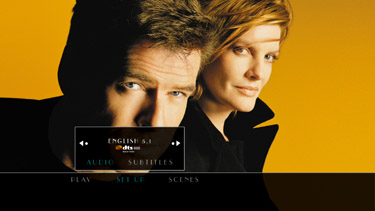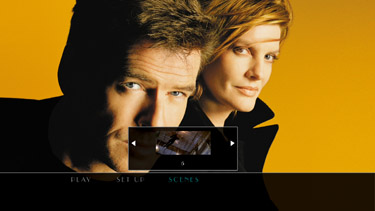Review by Leonard Norwitz
Studio:
Theatrical: Irish Dreamtime
Blu-ray: MGM Home Entertainment
Disc:
Region: FREE!
(as verified by the
Momitsu region FREE Blu-ray player)
Runtime: 1:53:17.165
Disc Size: 39,226,747,991 bytes
Feature Size: 38,948,032,512 bytes
Video Bitrate: 31.05 Mbps
Chapters: 36
Case: Standard Blu-ray case w/ 2 discs
Release date: April 6th, 2010
Video:
Aspect ratio: 2.35:1
Resolution: 1080p / 23.976 fps
Video codec: MPEG-4 AVC Video
Audio:
DTS-HD Master Audio English 4267 kbps 5.1 / 48 kHz / 4267
kbps / 24-bit (DTS
Core: 5.1 / 48 kHz / 1509 kbps / 24-bit)
DTS Audio French 768 kbps 5.1 / 48 kHz / 768 kbps / 16-bit
DTS Audio German 768 kbps 5.1 / 48 kHz / 768 kbps / 16-bit
DTS Audio Italian 768 kbps 5.1 / 48 kHz / 768 kbps / 16-bit
DTS Audio Japanese 768 kbps 5.1 / 48 kHz / 768 kbps / 16-bit
DTS Audio Portuguese 1509 kbps 5.1 / 48 kHz / 1509 kbps /
24-bit
DTS Audio Spanish 768 kbps 5.1 / 48 kHz / 768 kbps / 16-bit
DTS Audio Spanish 768 kbps 5.1 / 48 kHz / 768 kbps / 16-bit
Dolby Digital Audio Hungarian 224 kbps 2.0 / 48 kHz / 224
kbps / Dolby
Surround
Dolby Digital Audio Russian 224 kbps 2.0 / 48 kHz / 224 kbps
/ Dolby Surround
Dolby Digital Audio Thai 224 kbps 2.0 / 48 kHz / 224 kbps /
Dolby Surround
Dolby Digital Audio Turkish 224 kbps 2.0 / 48 kHz / 224 kbps
/ Dolby Surround
Subtitles:
English, Bulgarian, Chinese (traditional and simplified),
Croatian, Danish, Dutch, Estonian, Finnish, French, German,
Greek, Hungarian, Indonesian, Italian, Japanese, Korean,
Norwegian, Polish, Portuguese, Russian, Slovenian, Spanish,
Swedish, Thai, Turkish, none
Extras:
• None on Blu-ray disc
• DVD of the Feature Film w/ Commentary
The Film:
7
It's beyond tempting to compare the remake with the original
movie – not that the story needed a rethinking. But what are
we to say: that new actors and directors are to be forbidden
an opportunity to strut their stuff, to meet the challenge,
or even just to work the material? Who knows, maybe there’s
substance to be mined. I thought so, even though in some
ways I still prefer the original.
Whereas the 1968 Thomas Crown was an exercise in style over
substance (just ask Director Norman Jewison who admits as
much on the DVD commentary), the 1999 version of the story
is a riff on the old "Shell Game," a game that extends
beyond the question of who's got the Monet (Monet!) to who
is behind the mask. It is a question, posed in terms of
Trust and Control, deliberated in the film's opening scene
between Crown (a wry and very pleased with himself Pierce
Brosnan) and his therapist (Faye Dunaway – a nice touch). It
is a question that reverberates right through to the final
line of the movie.
Jewison, Cinematographer Haskell Wexler and Editor Hal Ashby
had a great time indulging in the relatively new trick of
split screen photography, aided by smart editing framing
choices. There are advantages to a simple story, simply
told, and there are risks that come with fleshing out
character and plot with elaborate detail. For one thing,
Director McTiernan's extends his shell game to his audience.
For example, we're not supposed to notice that Brosnan's
plan to heist the Monet depends on its success the
coincidental arrival on the scene of the head of security. A
few seconds sooner or later and the whole plan falls apart.
And, ask yourself why Brosnan hides the Monet behind his
Magritte. Is it not only to distract us from his true
intentions.
The new movie is smartly cast: Could anyone at the time be a
better choice than the Bondian Pierce Brosnan. OK, there
isn't nearly as much expressed by the eyes or going on
beyond them, but few actors possess that quality, or ever
did. Gary Cooper, certainly. Audrey Hepburn. And, I think,
Steve McQueen. Thomas Crown may have been the first time we
get to see McQueen in a suit and playing an educated man of
means, but it was a choice (McQueen himself lobbied for the
part) that worked an odd sort of magic across from Faye
Dunaway’s self-assured woman of fashion.
Rene Russo doesn’t really play the same part – indeed, her
character has a different history and name to go with her –
She’s older (45 as opposed to Dunaway's 27) and despite her
tough, cynical exterior, her Catherine Banning is just as
vulnerable. More so, I think. We can imagine her sparring
with Brosnan, and possibly winning. She's smart. Russo has
the necessary sex appeal. Maybe not as fashionable as
Dunaway was then, but she’s more direct and more revealing,
which, while I enjoy ogling Rene as much as the next guy, I
found not nearly as much fun.
As we saw in Predator, Die Hard and The Hunt for Red
October, we know John McTiernan can handle the action bits
and make them dramatically coherent, intelligent and useful,
all of which are necessary ingredients for a successful
Thomas Crown Affair. The remake of the 1968 classic was his
second shot at a romantic adventure, the first being the
failed Medicine Man with Sean Connery and Lorraine Bracco.
Hmmm. Grrrr. This one worked much better but I wonder about
some of his choices in the intimate moments. Why does
Banning toss an unopened crate she believes is a stolen
painting into the fire? Has she so lost control that she is
willing to try something so desperate? Does it matter if
Crown rescues it or if he doesn't?
The original screenplay was written by Alan Trustman – his
first, by the way, a success, which he followed promptly
with Bullitt. And that was pretty much it for Trustman. The
remake, with a screenplay by Leslie Dixon and Kurt Wimmer,
takes the basic outline and much of the detail and
transposes them to the present of ten years ago. As for the
heists themselves - which were fairly uncomplicated affairs,
though photographed with style in 1968 – all of the
modifications are to their credit. The new movie flirts with
the new Mission Impossible; the old movie with – well . . .
I usually prefer metaphor to explicit love making on screen,
and I’m not entirely convinced that Banning’s willingness to
parade around semi-nude once she beds Crown doesn’t give
away more than she should. I mean, she looks great, but
wouldn’t a woman of her character know that once she makes a
habit of undress she runs the risk of becoming mouse rather
than cat?
Image:
8/9
NOTE:
The below
Blu-ray
captures were taken directly from the
Blu-ray
disc.
The first number indicates a relative level of excellence
compared to other Blu-ray video discs on a ten-point scale.
The second number places this image along the full range of
DVD and Blu-ray discs.
MGM's transfer of this curiously unromantic movie is very
good indeed and faithful to its mood and intentions. The
high definition image retains the slightly less than razor
sharp picture that is appropriate to a fable of this sort,
while offering plenty of sparkle when necessary (the
sailplane and catamaran sequences, especially) but not quite
enough to tell if any of the paintings are forgeries. I
found no transfer issues such as noise, DNR or edge
enhancement, of concern. Blacks are deep and flesh tones
wander about with the mood of the moment. I thought the
picture darker overall than I remembered it.
Audio & Music:
8/9
From the outset we are made aware of the extent to which
Bill Conti's effervescent score is to be made a significant
source of energy for TTCA. It functions as the movie's
heartbeat, not unlike the earlier film's split-screen
photography. But whereas in the 1968 film, the photography
was all style while clarifying the plot and moving it
forward, Conti's music is like the subtext made manifest.
The effects are well judged, from the traffic outside the
museum, to the crowd inside; the heist is full of
contraptions that invite the surrounds to properly locate
them in convincing sizes and shapes. And so they do.
Dialogue is always clear, whether shouted on a stormy sea of
whispered on a crowded dance floor. When Conti's music comes
on, which is often, it tends to command attention, which is
its intention. A curious and effective mix.
Operations:
0
I don't think I have ever given a zero score for Operations
until now – after all, the Blu-ray does function and the
main menu has a nice look to it before it gets cluttered
with small windows. But the fact that the disc actually
plays from one end to the other brings the score up from a
minus 5. Why a –5? Because at every other opportunity, this
Blu-ray insults us or fails to do the minimum.
Let's start with the DVD included in this box: a
double-sided disc with an anamorphic presentation of the
movie on one side and a 4:3 crop on the other. They are
otherwise identical. It would have better for all concerned
if MGM had simply placed a label on the 4:3 side. Such DVDs
have no place in a high definition box.

The Blu-ray disc, which has zero extra features, makes use
of one of those search & search menus, where only a single
audio, subtitle or chapter option at a time is displayed.
This is made all the more frustrating by its having 36
chapters! Saving the biggest insult for last, the feature
commentary with Director McTiernan is available only on the
DVD – both sides, if you must know. This is manifest
insanity at it most puzzling.
Extras:
(0)
(See Operations for a comment on the Commentary)
Bottom line:
6
Even after forty-plus years I still find McQueen and Dunaway
irresistible. I never thought the machinations of the heists
were complex so I never wanted more. My understanding of the
dramatic energy of the movie was more along the lines of a
duel, between McQueen and Jack Weston on the one hand, and
McQueen and Dunaway on the other. The issue of Trust is
differently handled in both movies, enough to watch them
back-to-back just to see how it plays out.

A good Image and Audio transfer, but the Blu-ray fails
miserably and, so far, uniquely, in other departments. Just
at this writing, Amazon is offering this Blu-ray for $11.99
– over 50% off, which kind of makes up for the packaging
snafus.
Leonard Norwitz
April 13th, 2010
![]()
![]()

![]()
![]()
![]()
![]()

![]()
![]()

